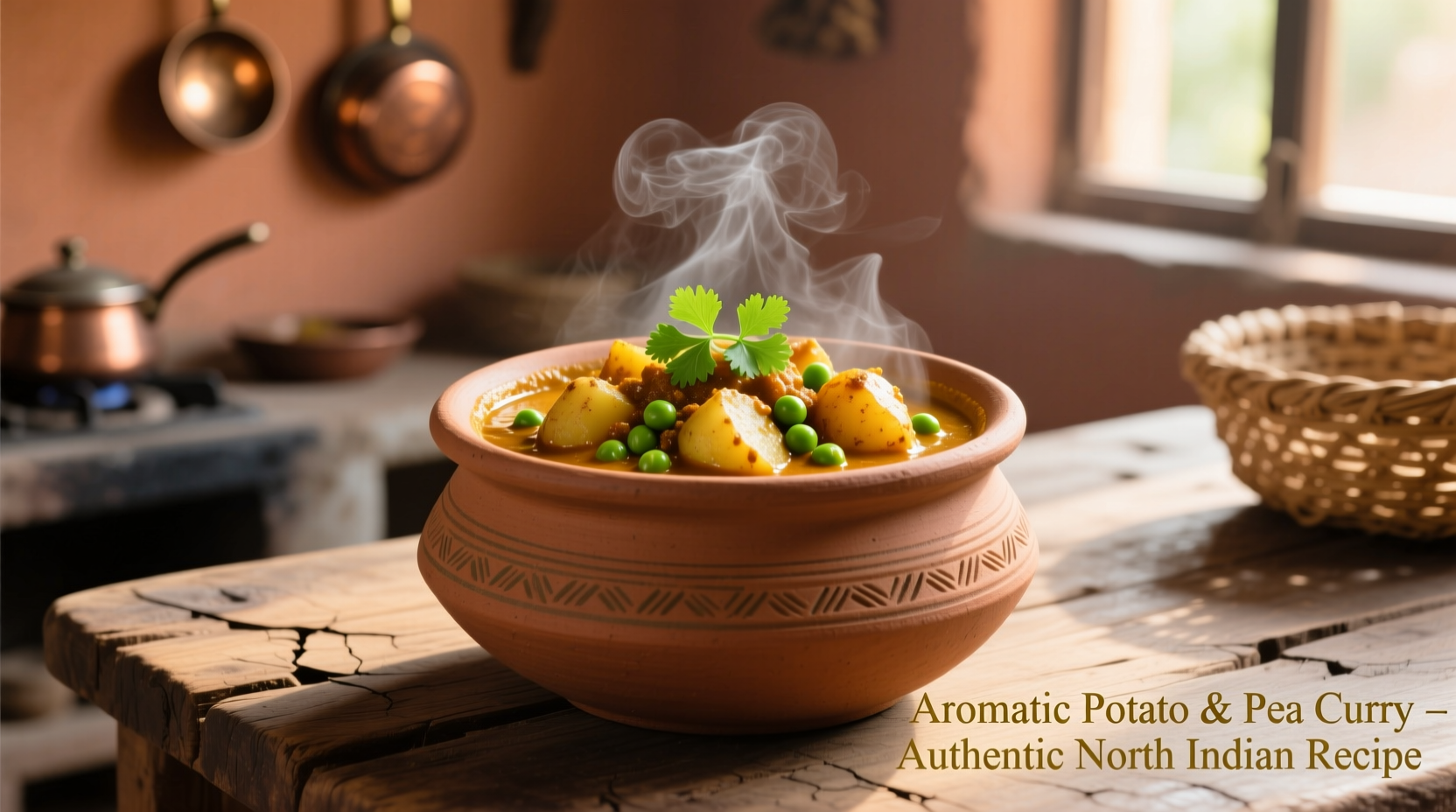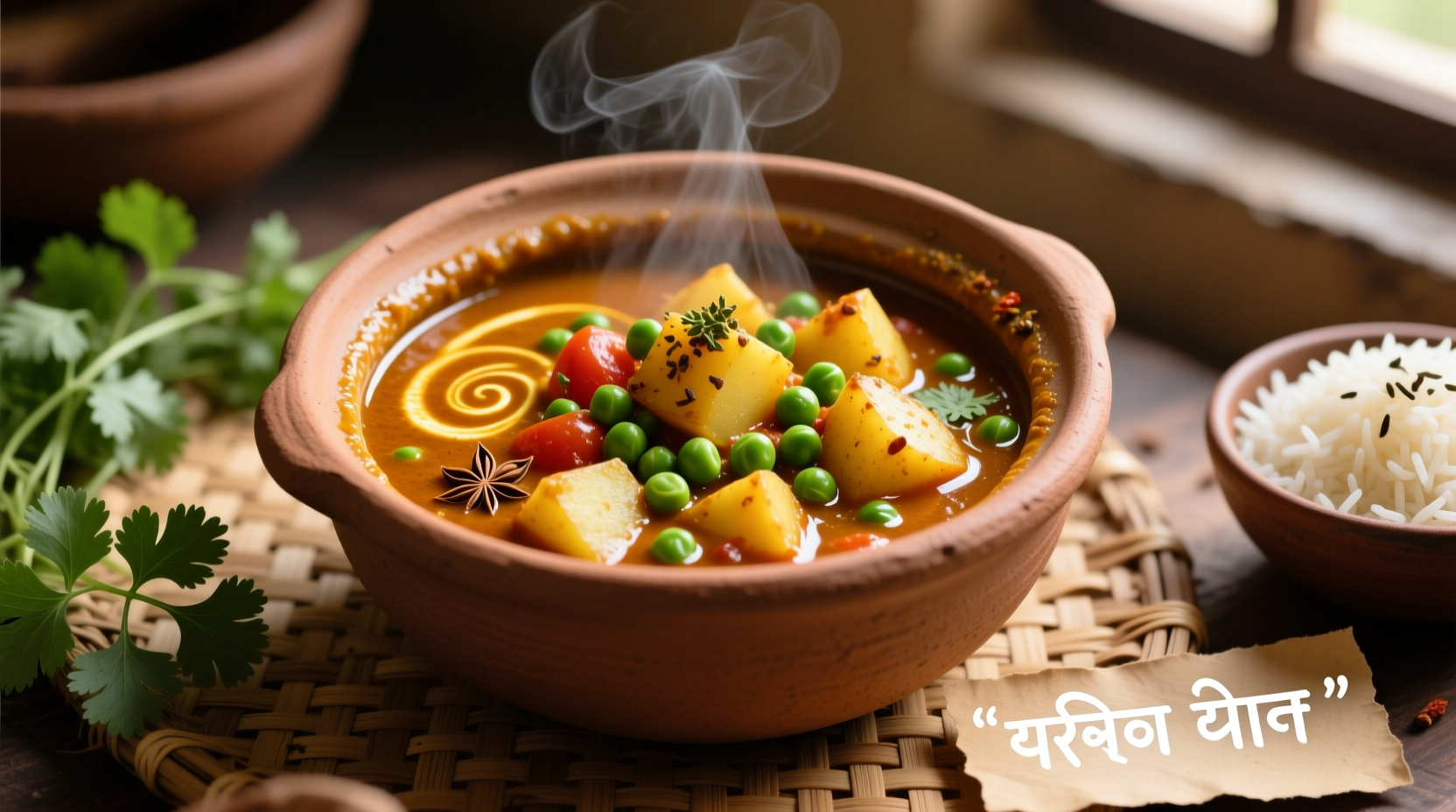Originating from the Indian subcontinent, potato and pea curry (known as Aloo Matar in Hindi) has become a beloved comfort food across South Asia and beyond. This vegetarian dish combines humble ingredients with aromatic spices to create something truly special. Whether you're a beginner cook or an experienced chef looking to refine your technique, this guide provides the essential knowledge to master this classic curry.
Why This Potato and Pea Curry Recipe Works
Unlike many simplified versions found online, this recipe respects the traditional layering of spices that creates authentic flavor depth. The magic happens through proper tempering technique (tadka), where whole spices release their essential oils in hot oil before other ingredients are added. This method, documented by culinary historians like those at the BBC Good Food Academy, creates complex flavor compounds that can't be replicated by simply adding spices to liquid.

Essential Ingredients and Their Purpose
Understanding why each ingredient matters helps you become a better cook. Authentic potato and pea curry relies on specific components working together:
| Ingredient | Function | Substitution Notes |
|---|---|---|
| Cumin seeds | Creates earthy base note when tempered | Must use whole seeds, not powder, for proper tempering |
| Fresh ginger | Adds bright, spicy warmth | 1 tsp ginger powder = 1 tbsp fresh grated |
| Green cardamom | Provides floral complexity | Use whole pods, not powder, for tempering |
| Creamy potatoes | Absorbs flavors while maintaining texture | Yukon Gold preferred over Russet for better texture |
Step-by-Step Cooking Process
Follow this professional technique for perfect results every time. The key is patience during the tempering and simmering stages.
1. Proper Tempering Technique
Heat 2 tablespoons of mustard oil (or vegetable oil) in a heavy-bottomed pot until shimmering but not smoking. Add 1 teaspoon cumin seeds and 4 green cardamom pods. Listen for the cumin to sizzle gently - this should take 30-60 seconds. Proper tempering releases essential oils without burning the spices.
2. Building Flavor Layers
Add 1 chopped onion and sauté until golden brown (10-12 minutes). Rushing this step creates bitter flavors. Then add 1 tablespoon grated ginger, 2 minced garlic cloves, and 1 chopped green chili. Cook for 2 minutes until fragrant.
3. Tomato Base Development
Add 2 chopped tomatoes and cook until the oil separates from the mixture (8-10 minutes). This critical step, verified by chefs at James Beard Foundation cooking demonstrations, creates the flavor foundation. Stir frequently to prevent sticking.
4. Spice Integration
Mix in 1 teaspoon turmeric, 1 teaspoon coriander powder, 1/2 teaspoon red chili powder, and 1/2 teaspoon garam masala. Cook for 2 minutes to toast the spices, stirring constantly. This activates flavor compounds that remain dormant in raw spice powders.
5. Simmering to Perfection
Add 1.5 cups water, 2 cups diced potatoes, and 1 cup peas. Bring to a boil, then reduce heat to low. Cover and simmer for 20-25 minutes until potatoes are tender but not mushy. Stir in 1/4 cup fresh cilantro before serving.
Regional Variations Timeline
Potato and pea curry has evolved significantly across regions and time periods:
| Era | Region | Key Characteristics |
|---|---|---|
| Pre-1800s | Northern India | Used only available local ingredients; no potatoes (pre-Columbian) |
| 1800-1947 | British India | Potatoes introduced; simpler spice blends due to colonial influence |
| Post-1947 | Punjab region | Rich tomato-based version with cream became popular |
| Modern day | Global adaptations | Coconut milk versions in Southeast Asia; lighter versions in Western countries |
Common Mistakes to Avoid
Even experienced cooks make these errors when preparing potato and pea curry:
- Adding raw spices directly to liquid - Always toast dry spices in oil first to release flavor compounds
- Overcooking potatoes - Cut to uniform 3/4-inch pieces for even cooking
- Using frozen peas without adjustment - Add frozen peas in last 5 minutes to prevent mushiness
- Skipping the "oil separation" step - This indicates proper tomato reduction for authentic flavor
When to Use Different Curry Variations
Understanding context boundaries helps you choose the right version for your needs:
- Traditional North Indian style (with tomatoes and cream) works best for dinner parties where rich flavors are appreciated
- South Indian variation (with coconut milk and mustard seeds) suits hotter climates and lighter meals
- British-Indian style (thicker, more tomato-based) pairs well with naan bread for casual meals
- Vegan version (substitute coconut milk for cream) serves dietary restrictions without sacrificing flavor
Storage and Reheating Tips
Potato and pea curry actually improves in flavor after 24 hours as spices meld. Store in an airtight container in the refrigerator for up to 4 days. For best results when reheating:
- Add 1-2 tablespoons of water before reheating to restore moisture
- Reheat gently over medium-low heat to prevent potatoes from breaking down
- Stir in fresh cilantro after reheating for bright flavor notes
- Freeze portions for up to 3 months; thaw overnight in refrigerator before reheating











 浙公网安备
33010002000092号
浙公网安备
33010002000092号 浙B2-20120091-4
浙B2-20120091-4